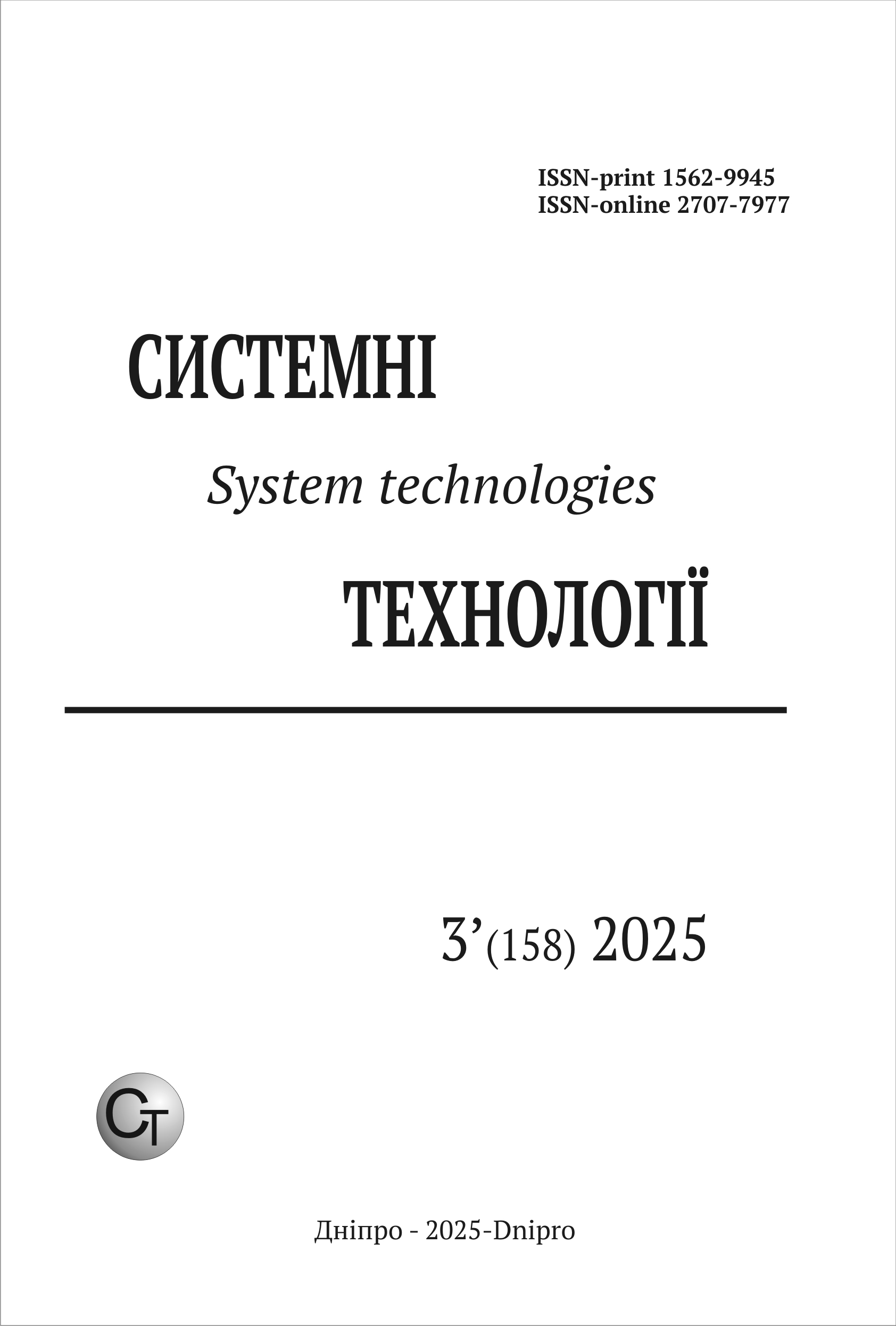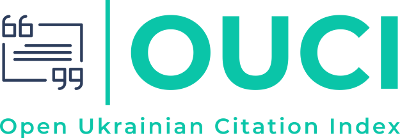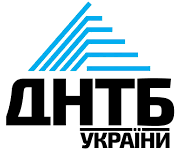THE ROLE OF CAD IN THE DEVELOPMENT OF ENGINEERING SOLUTIONS FOR THE METALLURGICAL INDUSTRY: EXPERIENCE IN USING ANSYS, AUTOCAD, SOLIDWORKS AND MATLAB
DOI:
https://doi.org/10.34185/1562-9945-3-158-2025-02Keywords:
computer-aided design, computer modeling, engineering calculations, technical standards, data analysisAbstract
The article examines the features of using modern software tools for designing products in the metallurgical industry, in particular, such as ANSYS, AutoCAD, SolidWorks, and MATLAB. In particular, attention is paid to their advantages and disadvantages in the context of specific metallurgical tasks, such as modeling technological processes, designing mechanical components, and analyzing thermal and mechanical loads. Separately, the application of ANSYS for numerical modeling of the metal rolling process is considered, MATLAB for mod-eling thermal processes in furnaces, as well as the use of AutoCAD and SolidWorks for creat-ing geometric models and designing rolling mills. The results of the analysis show that each of the software products has its own strengths and weaknesses, which determines the appro-priateness of their use depending on the specifics of the tasks. The authors provide recom-mendations for choosing tools, based on the requirements for accuracy, productivity, and cost. The scientific novelty of this work lies in the development of an innovative multiphysics approach that combines the integration of powerful software tools (ANSYS, AutoCAD, Solid-Works, MATLAB) for modeling complex metallurgical processes with an emphasis on mechanical, thermal and structural analysis. This approach allows to significantly increase the accuracy of engineering calculations, which is of great importance for the optimization of technological lines in metallurgy, in particular in the context of advanced analysis methods and improvement of design techniques in difficult production conditions.
References
Shapurov OO Research methods for production & business activity of machine-building enterprises. Actual Problems of Economics. 2009. No. 7. P. 168–174.
Shapurov OO State and trends of machine-building development. Actual Problems of Eco-nomics. 2009. No. 3. P. 57–63.
Strandless rolling based on four-high modules in stands of continuous section mills /
I. Oginskiy et al. Journal of Alloys and Metallurgical Systems . 2025. Vol. 9. P. 100149.
URL: https://doi.org/10.1016/j.jalmes.2024.100149
Numerical analysis of the twin-roll casting of thin aluminum-steel clad strips /
M. Stolbchenko et al. Forschung im Ingenieurwesen . 2014. Vol. 78, no. 3-4. P. 121–130.
URL: https://doi.org/10.1007/s10010-014-0182-x
Experimental twin-roll casting equipment for production of thin strips / OY Grydin, et al. Metallurgical and Mining Industry . 2010, 2(5), pp. 348–354
Murashko V., Kulik D., Hrechanyi O.M. Perspectives of using imitation modeling in the design of metallurgical equipment. Collection of scientific works of students, aspirants, doc-toral students and young scientists «Young science-2023» Zaporizhzhia: ZNU, 2023. Vol. 5 C. 363-365. [in Ukrainian]
Simulation modeling in the research of metallurgical equipment operation / OM Yhtchanyi et al. System technologies . 2024. Vol. 2, no. 151. P. 62–75.
URL: https://doi.org/10.34185/1562-9945-2-151-2024-06
Finite element simulation of liquid nitrogen temperature rolling of marine grade aluminum alloy 5754 / A. R. Jagadish et al. Materials Today: Proceedings . 2022.
URL: https://doi.org/10.1016/j.matpr.2022.04.618
Analysis of microstructure and properties evolution of asynchronous hot rolled stainless steel clad plate with interlayer / Y. Yi et al. Materials Today Communications. 2024. P. 111380. URL: https://doi.org/10.1016/j.mtcomm.2024.111380
Deformation Uniformity of Cold-Rolled Q235 Steel Rebar by FEM in Bending and Roll-ing Processes / F.-l. Sui et al. Journal of Iron and Steel Research International. 2012. Vol. 19, no. 8. P. 37–42. URL: https://doi.org/10.1016/s1006-706x(12)60137-x
A security architecture for Metallurgical and Heating Processes (Metallurgical furnace) / P. Urs et al. IFAC-PapersOnLine. 2024. Vol. 58, no. 22. P. 124–129.
URL: https://doi.org/10.1016/j.ifacol.2024.09.302
Zhao H., Bai R., Liu G. 3D Modeling of Open Pit Based on AutoCAD and Application. Proceedings of Earth and Planetary Science . 2011. Vol. 3. P. 258–265.
URL: https://doi.org/10.1016/j.proeps.2011.09.092
Effect of copper on the mechanical properties of alloys formed by powder metallurgy / WD Wong-Ángel et al. Materials & Design. 2014. Vol. 58. P. 12–18.
URL: https://doi.org/10.1016/j.matdes.2014.02.002
Sawant MS, Jain NK, Nikam SH Theoretical modeling and finite element simulation of dilution in micro-plasma transferred arc additive manufacturing of metallic materials. Interna-tional Journal of Mechanical Sciences . 2019. Vol. 164. P. 105166.
URL: https://doi.org/10.1016/j.ijmecsci.2019.105166
Additive manufacturing of metallic lattice structures: Unconstrained design, accurate fab-rication, fascinated performances, and challenges / L.-Y. Chen et al. Materials Science and Engineering: R: Reports. 2021. Vol. 146. P. 100648.
URL: https://doi.org/10.1016/j.mser.2021.100648
Radionova L. V., Chernyshev A. D., Lisovskiy R. A. Interactive Educational System – Virtual Simulator "Sheet Rolling". Procedia Engineering. 2017. Vol. 206. P. 512–518.
URL: https://doi.org/10.1016/j.proeng.2017.10.509 (
Design of Steel Profiles with Similar Characteristics to the Aluminum Profiles Used in Solar Panels / E. Calis et al. IFAC-PapersOnLine. 2024. Vol. 58, no. 3. P. 244–249.
URL: https://doi.org/10.1016/j.ifacol.2024.07.158
Achieving metallurgical bonding in steel faceplate/aluminum foam sandwich via hot pressing and foaming processes: interfacial microstructure evolution and tensile behavior / L. Wang et al. Journal of Materials Processing Technology. 2024. P. 118636.
URL: https://doi.org/10.1016/j.jmatprotec.2024.118636
Akhmetova G., Kudrya A., Panin E. Universal technique for information and digital anal-ysis of steel and alloy structures using MATLAB. MethodsX. 2024. P. 103059.
Downloads
Published
Issue
Section
License
Copyright (c) 2025 System technologies

This work is licensed under a Creative Commons Attribution 4.0 International License.















